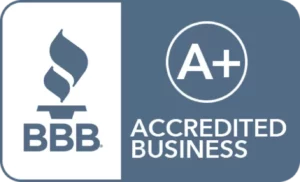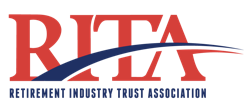A Coverdell Education Savings Account (ESA) lets you save for expenses associated with education your children in a tax-advantaged way. So long as you have a child under the age of 18, you can open an ESA. The plan allows you to invest funds earmarked for education expenses that will grow tax free. Funds used to qualified expenses will never be taxed. If you want to invest in more than what a bank offers you, you can start a Self-Directed Coverdell ESA to expand your options to include nontraditional (or alternative) assets, such as real estate, precious metals and private businesses.
How Does a Coverdell ESA Work?
As soon as you have a child, you may open up a Coverdell. Each year, until the child reaches 18 years of age, you may contribute up to the maximum allowable amount as set by the IRS. For 2023, you may contribute up to $2,000 for each eligible beneficiary. An ESA can be opened at most financial institutions. Chances are, if your local bank offers an IRA, they will also have ESA options.
Although there is no upfront tax break (meaning you do not get a deduction on your contributions), the funds in the Coverdell will grow tax-free. Anyone can contribute to your child’s ESA: relatives, friends, neighbors and even corporations. You may continue to contribute on your child’s behalf until he or she reaches age 18. Those funds can be withdrawn, tax free, for all qualified education expenses. For example, if you need to buy learning materials for your high-schooler, you can use ESA funds to offset the cost. Once your child reaches age 30, he or she has 30 days to withdraw all funds from the account. These funds will be taxed at the beneficiary’s current tax rate.
The most important choice you have with a Coverdell ESA is deciding where to start one. As stated, one can open up a plan at most financial institutions. However, this will limit your invest options. Generally, traditional financial institutions will only offer a select list of traditional investments, such as stocks and mutual funds. Alternatively, when opening the plan at the right custodian, such as IRA Financial, you can start a Self-Directed Coverdell ESA that opens your investment options to a broader range.
The Self-Directed Coverdell ESA
Just like a Self-Directed IRA, a Self-Directed Coverdell ESA can be started, funded and invested the way you want. Essentially, you can make any federally legal investment except life insurance, most collectibles and any transaction involving a disqualified person. The most popular investments are real estate, precious metals and surprisingly, cryptocurrencies. A broader investment menu will allow one to greater diversify his or her portfolio and allow for more stable investments and possible higher returns. Obviously, you must choose a custodian who will allow for such investments.
You have two option when choosing a Self-Directed Coverdell ESA – Custodian Controlled and Checkbook Control. While both allow for a wider assortment of investments, only a Checkbook Control Coverdell ESA will give you the freedom to invest in what you want, when you want.
Custodian Controlled Self-Directed Coverdell ESA
With a custodian controlled Self-Directed Coverdell ESA, you can generally invest in most types of alternative investments. However, more exotic types of investments, like cryptos, may not be allowed. A custodian may not want its clients to take on too much risk. Obviously, if an investment goes wrong, they might be out of a client, and his or her funds. Therefore, you will need to ask for consent, or permission, before embarking on an investment. Consent might not come for awhile. After all, custodians only work certain days with certain hours. This needless delay may cause you to lose out on a good deal.
Custodial Coverdell accounts are not without their merits. In fact, IRA Financial offers this option for all of our self-directed products. For those who do not make frequent purchases throughout the year, you may not need full control of the ESA funds. For example, a real estate investor who like to purchase “buy and hold” properties. If you don’t mind waiting for a custodian to vet your investment, this is a reasonable option for you.
Read IRA Financial’s Adam Bergman’s thoughts in his Forbes article.
Checkbook Control Self-Directed Coverdell ESA
If you want true freedom over your ESA funds, you must have checkbook control. As the trustee of the Coverdell, all investment decisions are in your hands. No custodian will ever say that you cannot make an investment because it is too risky. Assuming you are doing your due diligence, that shouldn’t be an issue. Further, since you are in control, funds are available to you 24/7. You simply have to write a check, use your debit card or wire funds to make a purchase.
Setting up a checkbook ESA is pretty straight forward. You need to create an LLC, then the Coverdell ESA. The ESA owns the LLC and is funded with a rollover or direct contribution. A bank account is created and funded with the Coverdell funds You, as the owner of the Coverdell and thus, the bank account, have complete control of the funds. You can make any type of investment you see fit.
Obviously, since you are in total control, you are the one making all the investment decisions. It’s up to you to do the homework on each investment you make. For example, if you are looking at a particular real estate investment to put some money into. Make sure it is sound and won’t go belly up! To ensure you are making the most of your money, it’s best to work with a qualified financial advisor.
What’s Next?
Once your Self-Directed ESA is funded and investments are made, you can watch your account balance grow! Funds from the ESA can be used tax-free to pay for qualified education expenses. These include tuition, books and supplies, tutoring services and room and board, among others. The great thing about an ESA are the tax advantages. You fund the plan with pretax money and are not taxed on qualified expenses. Therefore, you are never taxed on the money in your ESA, when used correctly.
Once you reach age 30, you must withdraw all funds from the ESA. If not used to fund another qualified beneficiary, such as a sibling, son or daughter, you will only owe taxes on the amount withdrawn. Unqualified distributions prior to age 30 would be subject to penalties, in addition to taxes.
In Sum
A Self-Directed Coverdell ESA is a great way to prepare yourself and your child(ren) for school. The ability to self-direct the plan will allow you to see better returns and diversify your holdings, to hopefully, offset most of your educational expenses.
IRA Financial Trust will help set up your account and keep it within the IRS rules. Unlike other financial institutions, we will never try to sell you a product, or offer investment advice. We’re here to simply set up the plan and ensure you follow the rules. It’s up to you to decide how and when to invest. Let your money work for you by investing with a Self-Directed ESA.











